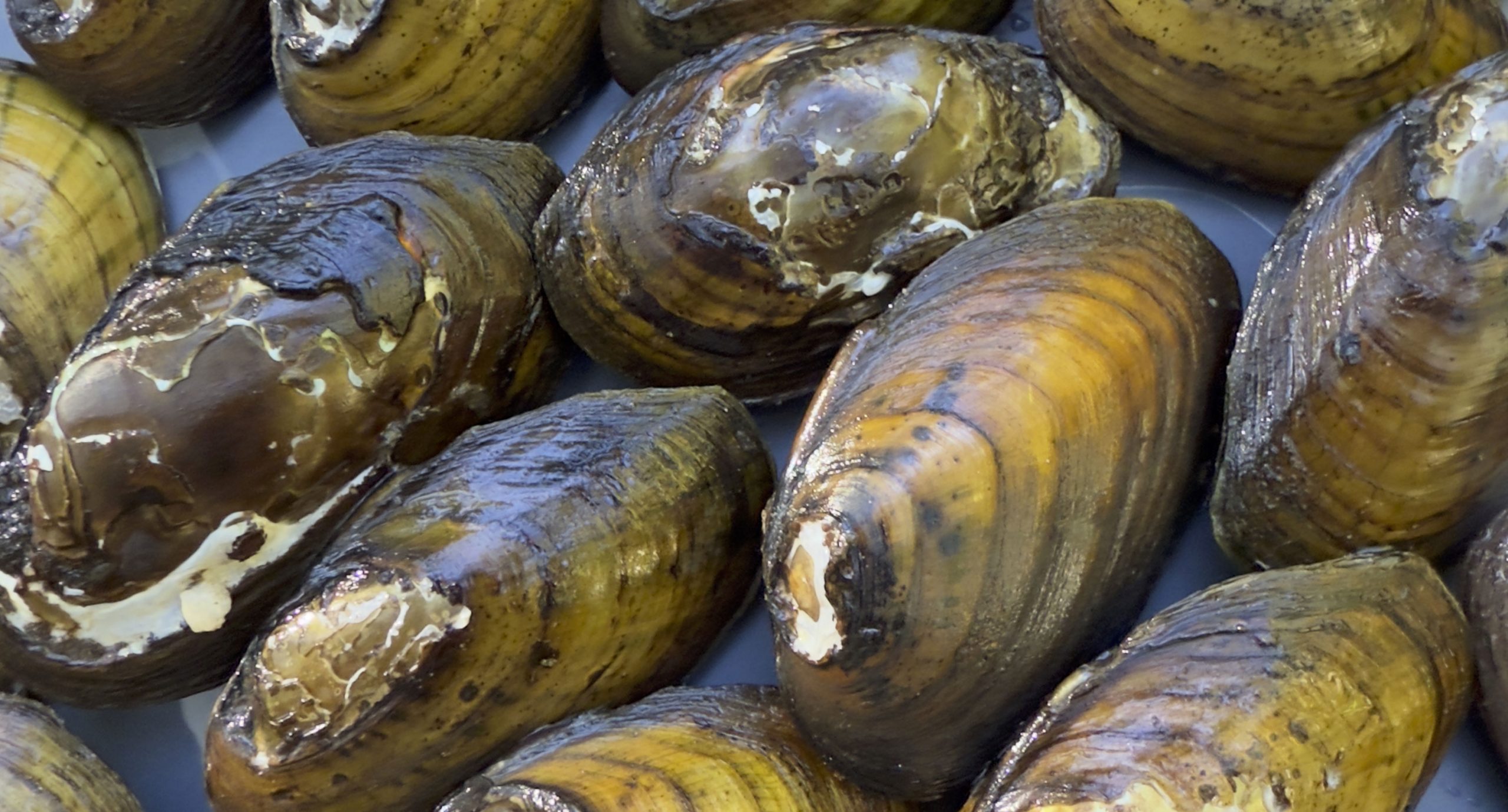
Flowing over nutrient-rich limestone rock that fueled a diverse assemblage of species, Abrams Creek was once one of the most productive streams in Great Smoky Mountains National Park. That changed in 1957, when wildlife managers intent on expanding opportunities for anglers stocked it with non-native rainbow trout—after applying the fish pesticide rotenone to the entire lower portion of the creek, hoping to protect the trout from competition. Chilhowee Dam was completed later that year, cutting the creek off from downstream fish populations.
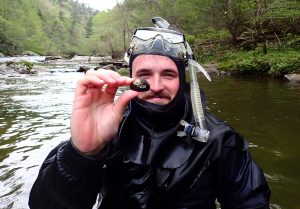
Though rainbow trout do still occur above Abrams Falls, overall the stocking effort was a failure—the water downstream of the falls proved too warm to meet their needs—and over the decades following their release perspectives on wildlife management began to change. By the mid-1980s, the National Park Service was actively supporting efforts to restore native fish species that had been extirpated by the rotenone treatment. Of the 67 species native to Abrams Creek, 46 were initially eliminated. Though most managed to return on their own, recolonizing from upstream and tributary populations, ten remained absent. Since then, eight of these species have been restored.
“Now it’s time to move on to reintroducing mussels and close the loop on what that aquatic system should probably look like,” said Matt Kulp, supervisory fisheries biologist for Great Smoky Mountains National Park.
Mussels are a little-known but integral part of freshwater ecosystems. They stabilize streambeds, process organic matter for use by other organisms, remove harmful toxins from the water, and are an important food source for other species—including the rare hellbender salamander and reintroduced northern river otter. But re-establishing mussels in a disrupted ecosystem like Abrams Creek is a tall order. Their complex reproductive cycle requires a specific set of conditions for success, and because about 70 percent of Southeastern mussel species are protected, obtaining enough individuals for a successful reintroduction can be challenging.
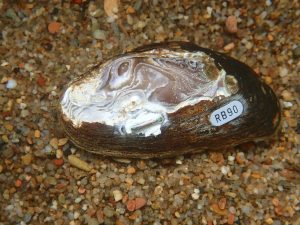
Since 2024, Kulp has been working with University of Tennessee graduate student and former park employee Caleb Moses to start the process. Moses, a native of Madisonville, Tennessee, has been working with fish since high school and spent two seasons on the Smokies’ fisheries crew before diving head-first into the world of mussels for his graduate studies.
“Now I don’t think I can ever go back to working with fish,” Moses said. “Mussels are just incredible.”
Their unique life cycle—and their need for a host fish to complete it—is one of the most fascinating things about them. Though some mussels are generalists, most rely on a specific type of fish to nourish and disperse their young. Mussels are stationary, so to mate males release sperm into the open water while females create a brood pouch in which to lay eggs. The eggs are fertilized when the female siphons in water containing sperm.
After the eggs hatch into their larval form, the female mussel uses a fleshy part of her body known as the mantle to mimic the preferred food of the specific fish species her young require for success. When the fish draws near looking for a meal, she shoots her larvae into the fish’s mouth. The larvae, called glochidia, attach to the fish’s gills or fins, feeding on its blood until they become mature enough to drop off and start the cycle again. In most cases, this parasitic relationship has only a minor effect on the fish host, which heals quickly after the glochidia drop off.
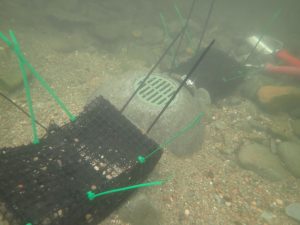
“Most of our species, especially in the Southeast, have very specific fish hosts that they attract by making a lure, and it’s different depending on which type of species they’re trying to target,” Moses said. “So the wavyrayed lampmussel, for example, will make a fish-shaped lure. And it’s amazing. It looks exactly like a little bit of fish swimming under the water.”
Because mussels can’t reproduce without their host fish, the fish poison applied to Abrams Creek also wiped out its mussels, though, as with the fish, some managed to survive or recolonize, Moses said. Five mussel species were resilient. Now that the National Park Service has restored nearly all of the extirpated fish species, reintroduced mussels would, in theory, be poised to thrive.
To start the process, Moses first had to determine which mussel species lived in the creek prior to 1957—a challenging task. The park had record of only one pre-1957 species survey on the creek, completed in 1914, and that effort documented only one mussel species. To augment this thin historical record, Moses considered findings from nearby archeological sites, especially on Citico Creek and the Little Tennessee River, where indigenous people had deposited used mussel shells. He also used information from “sister tributaries” to Abrams Creek—waterways that would have historically been connected by the Little Tennessee River and likely contained similar species.
“We pulled from a variety of resources to try and make this as robust as possible,” Moses said.
Using this research, Moses compiled a list of 12 species deemed to have “high potential” for success in Abrams Creek. Once Moses’ thesis is finalized later this year, Kulp and his colleagues at the National Park Service will review the list and develop a long-term plan for restoring mussel diversity to Abrams Creek. In the meantime, Moses is in the midst of what has so far been the successful release of two native mussel species: the spike mussel and the slippershell.
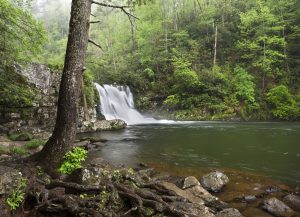
In April 2024, Moses released 60 spike mussels and 32 slippershells, contained in underwater cages so he could easily monitor their progress. Unfortunately, the cages drew the attention of vandals, who cut them open and left them up on the bank. He tried again, but the same thing happened, with about half of the released mussels lost in the process.
Now the researchers are no longer using cages but have instead affixed location-tracking tags to the remaining mussels so they can easily monitor their progress. So far, the news is good.
“The individuals that we recovered have been super healthy,” Moses said. “You can see how well they’re doing by testing their muscle strength, and all the individuals recovered—of both species—are doing very well at this point.”
The mussels’ long-term success hinges on three conditions being met: healthy habitat, healthy demographics, and healthy genetics. Initial monitoring indicates that they’re satisfied with their habitat, but meeting the other two conditions will require additional releases and scientific analysis.
“If these species perform well, we can expand,” said Kulp. “We would probably need to bring in more individuals, but I want to guide those decisions with an understanding of the population’s genetic characteristics.”
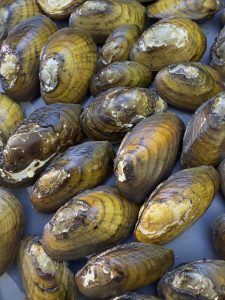
When reintroducing a previously extirpated population, there’s always a risk that the released animals will be too similar genetically, leading to issues with inbreeding and population health down the road. But modern tools allow scientists like Kulp to analyze the genes of individuals slated for release, ensuring healthy genetics in the reproducing population.
With 141 native mussels, Tennessee is unique for its immense diversity of these species. Neighboring North Carolina has 53 native mussel species, and 11 species have been recorded in Great Smoky Mountains National Park. Both Kulp and Moses hope to bring even more of this diversity to Abrams Creek in the coming years.
But it’s a complicated process. One of the reasons that the spike mussel and slippershell were chosen for the first restoration project is that neither species is considered threatened or endangered, making it easier to procure individuals for reintroduction and reducing the timeframe for securing permissions to complete the project. Mussels face a long and growing list of threats—including sedimentation, disease, toxins—and most of the species on Moses’ list are protected in some manner. Restoration efforts on Abrams Creek have been ongoing since the mid-1980s, and they’re likely to continue for decades yet to come.
“I think what’s really neat about Caleb’s work is it will provide a road map for recovery,” said Kulp. “Long after I’m gone, whoever is here working will have a game plan, or at least a road map, to which species could be reintroduced.”
Subscribe to get the latest posts sent to your email.
The Great Smokies Welcome Center is located on U.S. 321 in Townsend, TN, 2 miles from the west entrance to Great Smoky Mountains National Park. Visitors can get information about things to see and do in and around the national park and shop from a wide selection of books, gifts, and other Smokies merchandise. Daily, weekly, and annual parking tags for the national park are also available.